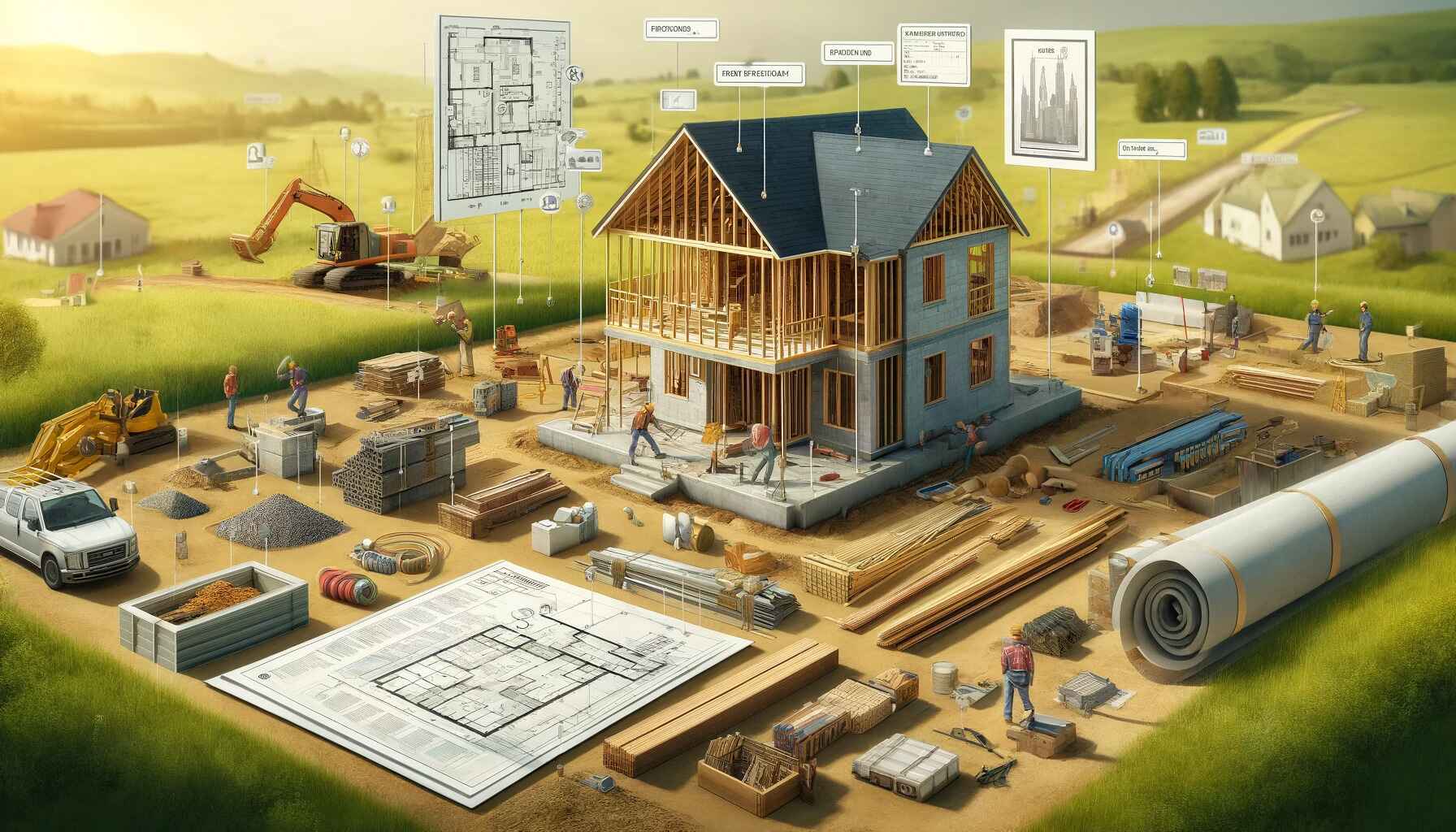Building a house involves numerous considerations, and one of the most critical is the cost. Understanding the various factors that influence house construction costs can help you plan your budget effectively and avoid unexpected expenses. This article breaks down the key components that affect the cost of building a house and offers tips for managing your budget efficiently.
Land Acquisition
The first major expense in house construction is acquiring land. The cost of land varies widely depending on location, size, and availability of utilities. Urban areas tend to have higher land prices compared to rural locations. Additionally, the topography and soil condition of the land can affect construction costs. For instance, building on a slope or rocky terrain may require additional site preparation, increasing the overall expense.
Design and Planning
Hiring an architect or a designer to create a blueprint for your house is another significant cost. The complexity and size of the design directly influence the fee. Custom designs usually cost more than pre-designed plans because they require more time and effort. It’s crucial to invest in a good design as it ensures that the house meets your needs and adheres to local building codes.
Permits and Fees
Before construction begins, you need to obtain various permits and pay related fees. These include building permits, zoning permits, and environmental permits, among others. The cost of permits varies by location and the scope of the project. Failing to secure the necessary permits can lead to legal issues and delays, potentially increasing the overall cost.
Materials
The choice of materials significantly impacts construction costs. High-quality materials like hardwood, stone, and energy-efficient windows are more expensive than standard options. However, investing in durable materials can save money in the long run by reducing maintenance and repair costs. Additionally, the prices of materials fluctuate based on market demand and supply chain factors, so it’s wise to keep an eye on these trends.
Labor
Labor costs represent a substantial portion of the construction budget. Skilled labor, including electricians, plumbers, and carpenters, commands higher wages. The cost also varies depending on the complexity of the work and the local labor market. It’s essential to hire experienced and reputable contractors to ensure quality workmanship, even if it means paying a bit more upfront.
Site Preparation
Preparing the site for construction involves clearing the land, leveling it, and setting up temporary utilities. This process can be straightforward or complex, depending on the condition of the land. For example, removing trees, rocks, or existing structures can add to the cost. Proper site preparation is crucial for a stable foundation, so it’s not an area to cut corners.
Foundation
The type of foundation you choose affects the overall cost. Common options include slab, crawl space, and basement foundations. Basements are the most expensive due to the additional excavation and waterproofing required. However, they offer extra living space, which can be beneficial. The choice depends on your budget, the soil conditions, and your future plans for the house.
Utilities and Infrastructure
Connecting your house to essential services like water, electricity, and sewage systems incurs additional costs. These costs vary based on the distance from existing infrastructure and the complexity of the installation. In some cases, you may need to install a septic system or a well, which can be more expensive than connecting to municipal services.
Interior Finishes
Interior finishes, including flooring, cabinetry, countertops, and fixtures, add to the construction cost. The price range for these items is broad, allowing you to choose according to your budget. High-end finishes increase the cost significantly, but mid-range options can still provide a stylish and functional interior without breaking the bank.
Contingency Fund
Finally, it’s essential to allocate a contingency fund to cover unexpected expenses. Construction projects often encounter unforeseen issues like weather delays, design changes, or material shortages. Setting aside 10-15% of the total budget for contingencies helps manage these risks without derailing your project.
Conclusion
House construction costs encompass a wide range of factors, from land acquisition and design to materials and labor. Understanding these elements allows you to plan your budget effectively and make informed decisions. By investing in quality design and materials, hiring skilled labor, and preparing for unexpected expenses, you can ensure a smooth construction process and build a house that meets your needs and stands the test of time. Proper planning and budget management are key to a successful and cost-effective home construction project.

